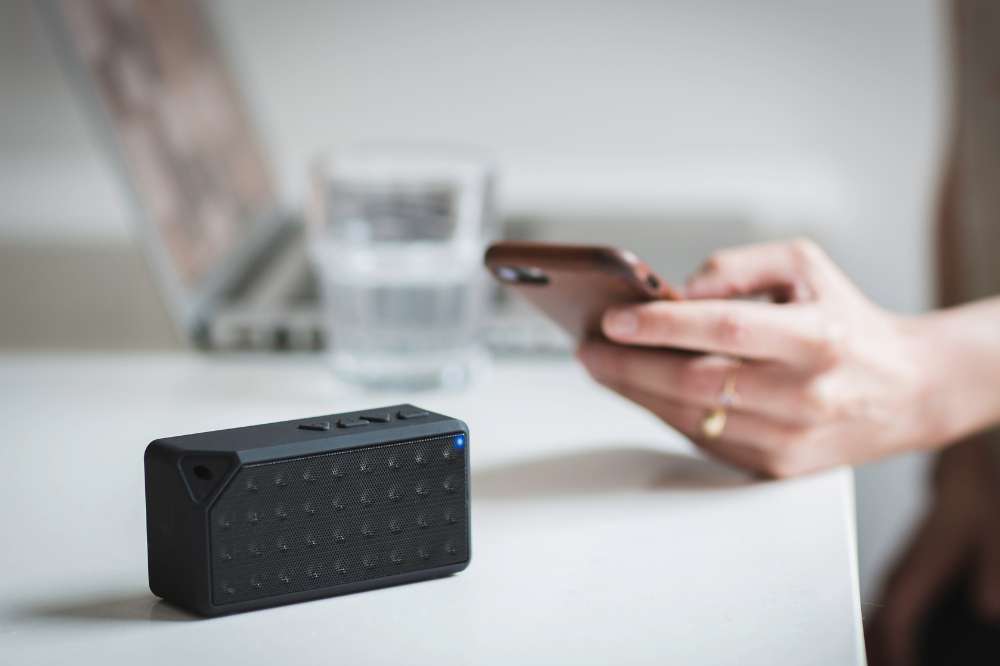Bluetooth connectivity is a big part of our wireless world. So, it is not uncommon to experience connectivity issues now and then. Moreover, you don’t have to visit a repair shop every time you get a connectivity issue to get it sorted.
This blog post reviews all the standard DIY solutions for troubleshooting Bluetooth connectivity. Keep reading to figure out how to tackle Bluetooth connection issues when they come up.
What Are the Common Bluetooth Connectivity Issues?

There are only a couple of types of Bluetooth problems that Android users experience. Here are some of the common Bluetooth connectivity issues:
- Compatible with major cable internet providers including Xfinity, Spectrum, Cox and more. NOT compatible...
- [Compatibility] 12V Power Supply Adapter Compatible with Netgear, Linksys, Asus,Motorola, Motorola/Arris...
- Android devices don’t connect to other mobile devices
- Audio playback can be choppy
- The phone disconnects constantly
- Android phones don’t connect to the car
Troubleshooting these issues would involve:
Try Connecting With a Different Device
If your mobile phone doesn’t connect to your Bluetooth device, the first step is to try connecting with another device. This factor rules out where the problem is from, whether the device or the Bluetooth device. If the problem is with the device, here are the steps you should take below.
Turn Off Bluetooth, Then Turn It On
Once your phone’s Bluetooth doesn’t connect, one of the first steps to try is to turn it off and on. This step is easy. You can make the change by opening the notification panel and tapping on the Bluetooth icon to turn it off. After, wait a minute or two, then turn it on again.
Unpair and Pair the Devices Again
If switching off and on your phone’s Bluetooth doesn’t work, the next step is to unpair the device. It is simple to unpair the devices. Go to the Bluetooth via a long press of the Bluetooth icon on the notification panel or by visiting the phone’s settings.
Once you find the device you want to unpair, do a long press and select “Forget device” to unpair. Once you have successfully unpaired the devices, you can pair the devices again using Bluetooth.
Inspect the Distances Between the Devices
You need to inspect the distances between the devices if nothing still happens. For most Bluetooth connections to occur, you need the devices to be close to each other. The maximum Bluetooth range for most devices is within 30 feet. If the devices aren’t within this range, they will probably not connect.
Also, obstacles like doors and walls might have stood in the way. The obstacles mainly occur when you have a choppy audio playback, which could be because of interference. Avoid obstacles and other electronic devices and see if it improves the Bluetooth quality.
Ensure the Other Device Is Discoverable
If you are trying to connect your Android phone to your phone or computer, you must ensure it is discoverable. If the device isn’t discoverable, your phone cannot connect. To make the device discoverable, you have to go to the Bluetooth setting of the device and choose between make visible or make discoverable.
You can double-check by checking your phone’s settings. If your phone is an Android 11 or 12, you may not find the make visible or discoverable as it is discoverable by default.
Restart Your Phone
If you are still having problems making your phone discoverable, you should restart the phone. Often, it can be a simple glitch that a quick restart can solve. This step will close all the apps and background processes. This solution will fix the phone’s Bluetooth connection.
Clear the Cache and Storage
Cache might constitute a nuisance and a reason your Bluetooth connectivity is all jumbled up. When you clear the Bluetooth cache, you remove all the temporary data that might have been stored on your phone. To clear your Bluetooth cache, open the settings app and go to App Management.
Under App Management, you will find the App list. If you can’t find the Bluetooth, try looking for the Show System option. It will show the system apps, including Bluetooth. Once you find the app, tap on the Bluetooth option. After you see the Storage and Cache, tap it to clear the cache.
Reset the Bluetooth Settings
You can reset your Bluetooth setting to get your connectivity back on track. This will reset the custom setting and restore the Bluetooth to the default setting. To reset the Bluetooth setting, go to the settings and visit the system. Here is where you can reset your phone or the reset option.
The available options depend on the phone brand. Tap the Reset WiFi settings. Once you reset the setting, it reset your WiFi and Bluetooth settings. Once complete, you can reconnect your device and see if the problem is gone.
Scan for Viruses and Malware
Viruses and malware can interfere with your phone’s OS and wreak havoc when your phone is affected. You can install an antivirus or malware app to check for viruses and malware. Most Android devices come with a built-in antivirus.
You can also get a third-party app on Playstore to sort the problem. You also want to ensure your device is free from any troublesome apps that might be acting up. You can do this by disabling the apps individually to figure out the problem.
Reset Your Phone as a Last Resort
If you have tried everything on our list and nothing happens, the last resort would be to reset your phone. This will delete all the information on your phone.
Note that this should be done as a last resort as essential details would be lost. Usually, when you erase your data, it wipes out any problems that you might not have noted with the other troubleshooting solutions.
Key Takeaway
Bluetooth connectivity is a big part of our digital experience. Often, we come across some connectivity problems. Whenever your Bluetooth has a problem connecting, you don’t have to go to a repair shop.
This article goes over all the troubleshooting steps you can take. The culprit might be an interference or a need to unpair and repair.



